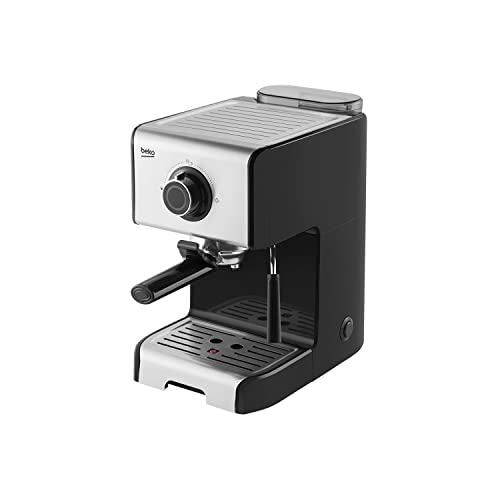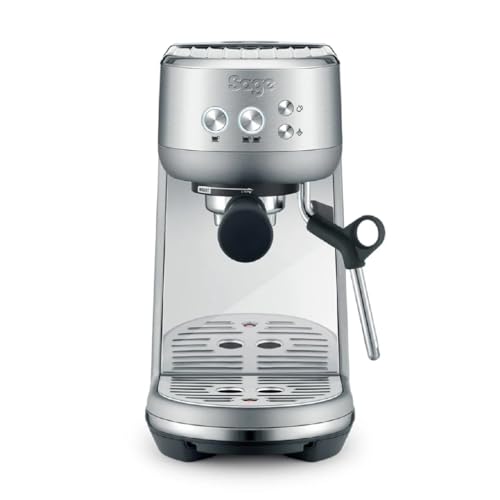- 작성자 Darin
- 댓글 0건
- 조회 45회
- 작성일 2025.08.04
본문

The Art of Italian Espresso Machines: A Brewed Tradition
Italian espresso machines are not simply home appliances; they are an integral part of Italy's abundant coffee culture, representing a mix of artistry, engineering, and design. Coffee connoisseurs around the world acknowledge the value of high-quality espresso, a staple of Italian life and food. This short article explores the history, mechanics, types, and factors to consider when buying an Italian espresso machine, reflecting the depth of this beloved drink and its developing methods.
History of Espresso Machines
The espresso machine's advancement dates back to the early 20th century in Italy, where coffee was not merely a beverage but a necessary social routine. The preliminary efforts to brew espresso started with simple, stove-top models, slowly developing into complicated machines that might reproduce the ideal brew.
- 1901-- The First Espresso Machine: The first steam-powered espresso machine, called the "Ideale," was established by Luigi Bezzera. This equipment marked a turning point in espresso brewing.
- 1938-- The Lever Machine: The intro of the lever machine made it much easier to manage the pressure used in espresso extraction, improving flavor consistency.
- 1947-- The Automatic Machine: Reaching more consumers, Gaggia released the very first automatic espresso machine, further popularizing espresso bars.
- 2007-- The Digital Age: Technological developments caused the birth of completely programmable machines, allowing users to customize their developing settings to achieve a personalized coffee experience.
Secret Features of Italian Espresso Machines
Italian espresso machines embody accuracy, workmanship, and development. Here are some essential elements that highlight their significance:
| Feature | Description |
|---|---|
| Boiler Type | Determines how heat is produced and preserved. Typical types consist of single boiler, dual boiler, and heat exchanger. |
| Group Heads | Where the coffee is brewed; commercial machines often have several group heads for effectiveness. |
| Pressure Control | Essential for achieving the best espresso; most machines operate at 9 bars of pressure. |
| Frothing Capabilities | The steam wand enables milk frothing, vital for drinks like cappuccino and latte. |
| Develop Quality | The materials utilized (stainless-steel, brass, etc) influence durability and heat retention. |
Types of Italian Espresso Machines
Choosing the right machine depends upon user choices, budget, and intended use. Below are the primary types of Italian espresso machines:
Manual Espresso Machines
- Pros: Offer complete control over the brewing process, allowing for a customized touch.
- Cons: Require ability and practice, can be labor-intensive.
Semi-Automatic Machines
- Pros: Provide a balance in between automatic and manual processes; users control water circulation.
- Cons: Can have a steeper knowing curve than completely automatic machines.
Fully Automatic Machines
- Pros: Simplify the developing process with push-button operations; ideal for novices.
- Cons: May compromise some of the subtleties of manual developing.
Super-Automatic Machines
- Pros: Grind, tamp, brew, and froth instantly; convenient for busy way of lives.
- Cons: Less control over the brewing variables, capacity for a less genuine espresso experience.
Purchasing Guide: Factors to Consider
Selecting the perfect Italian espresso machine can be difficult, but thinking about the following factors can simplify the decision-making process:

- Budget: italian espresso machines (https://bhcypa.org/members/paullegal2/activity/111499) vary from affordable to high-end designs, so set a budget upfront.
- Usage Frequency: Evaluate how often you will use the machine; everyday users might want a more durable option.
- Area: Measure your kitchen or counter area; some machines can be big and need enough clearance.
- Maintenance: Consider ease of cleaning; machines with detachable parts or built-in cleaning features might decrease maintenance.
- User Skill Level: Beginners may prefer fully or semi-automatic machines, while skilled baristas can deal with manual machines.
- Brand name Reputation: Research brands understood for quality, such as Breville, Gaggia, and La Marzocco.
Popular Italian Espresso Machine Brands
Italian craftsmanship is renowned for producing some of the very best espresso machines worldwide. Here are top brands worth thinking about:
- Gaggia: Known for its home espresso machines and price.
- La Marzocco: An exceptional brand understood for its commercial-grade machines and innovative technology.
- Rancilio: Renowned for its durable build and professional-quality machines appropriate for home and commercial use.
- Sage/Breville: Offers advanced functions and user-friendly designs, best for both amateurs and enthusiasts.
Frequently asked questions
What is the distinction in between espresso and regular coffee?
Espresso is a focused coffee brewed by requiring warm water through finely-ground coffee under pressure. It has a thicker consistency, richer flavor, and higher caffeine concentration than routine coffee.
Can I make milk-based drinks with an espresso machine?
Yes, lots of Italian espresso machines include a steam wand to froth milk for beverages like cappuccinos, lattes, and macchiatos.
How frequently should I clean my espresso machine?
Routine maintenance is necessary. Typically, an extensive cleaning is advised every couple of weeks, while descaling needs to be done every 1 to 3 months, depending on water hardness.
What is the ideal pressure for developing espresso?
The perfect pressure for brewing espresso is around 9 bars. This pressure ensures the optimum extraction of tastes from the coffee grounds.
Are more pricey machines worth the financial investment?
Higher-end machines frequently use better materials and innovation, providing improved sturdiness and more constant results. For serious coffee fans, buying an excellent machine can elevate the espresso experience substantially.
Italian espresso machines are much more than simple developing gadgets; they are an event of a cultural custom that has actually affected coffee intake worldwide. With various designs available to fit any user's requirements-- varying from novices to skilled baristas-- there is an Italian espresso machine perfectly fit for everybody. As you embark on your espresso journey, comprehending the history, mechanics, and alternatives will enrich your experience and gratitude for this time-honored drink. Whether you look for to recreate a café atmosphere at home or fine-tune your developing strategy, these machines are capable of providing memorable cups of espresso adorned with the rich history of Italian coffee culture.
댓글목록 0개
등록된 댓글이 없습니다.

